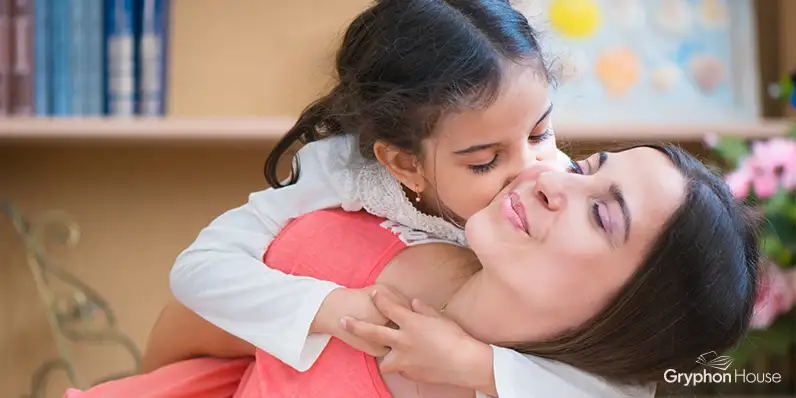Classrooms are diverse communities. Even in small daycares, people of multiple cultures and backgrounds come together to share the education space. When a classroom has students from various cultures, teachers should create an environment that accepts and includes different backgrounds. How to start? Engaging families!
The gap between family life and school life can feel enormous and isolating. This is especially true if a child comes from a culture that is very different from the dominating classroom culture. By engaging with the families of all students, teachers can bridge this gap and help children feel more comfortable and secure in school. Here are some tips on how to include families in your classroom from Johnna Darragh Ernst’s book The Welcoming Classroom:
Equitable Use
It is important to ensure the classroom environment is accessible to both students and families. This means taking into account the abilities of parents and caregivers who come to the classroom. Equitable use can refer to a classroom being physically accessible for those with disabilities, or being linguistically accessible for those who struggle with English. Make sure signs and labels reflect all languages present in the classroom and that each room has an easy-access entrance and exit for those with mobility issues. To help families feel more comfortable and welcome, provide a space such as a couch or sofa where teachers and caregivers can talk privately. Simple changes like these make communication and interaction easier, and in turn strengthen children’s school-home connections.
Flexibility
It’s easy to get attached to how things have always been. Perhaps family orientation typically begins with a funny instructional video, or parent-teacher nights begin some games. These traditions of sorts may create a lighthearted, engaging environment, but they’re not guaranteed to work for every family. Maybe the video was confusing and the jokes didn’t land; maybe a language barrier excluded some parents from the games. That’s why flexibility is so important. Teachers need to be willing to adapt to accommodate families and students who are in their classrooms. Willingness to listen to parent and family feedback or scheduling one-on-one meetings can help you identify new ways to engage everyone!
Tolerance for Error
Teachers try to be as clear as possible when giving instructions, but sometimes mistakes happen. Practice empathy with your students and parents. Tolerating mistakes on the part of families is just as important as tolerating them with children. Cultural differences can sometimes make rules seem strange or unnecessary. A family from Havana may not understand why the class dress code prohibits tank tops or flip flops; in their family, that is everyday clothing. Meanwhile, an Italian family may have few boundaries when it comes to hugging or kissing each other, so their child getting into trouble for “not keeping her hands to herself” is confusing and unexpected. Different cultures have different rules, and a simple definition of the rule may not be enough to explain it. It’s therefore important that teachers communicate with families about the rules of the classroom and tolerate when they are broken unintentionally. A classroom is a place for learning, for students, parents, and teachers.
Author(s)Johnna Darragh Ernst, PhD
Ashleigh Craven
Ashleigh Craven has a decade and a half of diverse category experience from agency communications to athletic apparel to automotive to education, developing and executing communication strategies in both traditional and social media. She has supported national product launches and corporate events for the likes of Soffe, Buick, Chevrolet, Wake Forest University , Kaplan, and others. She has an BA from the University of Michigan in English and Communication Studies and an MA from Wake Forest University, where she focused her studies on argumentation and presidential rhetoric and speechwriting. She served as director of marketing for Gryphon House from 2017- 2020.

